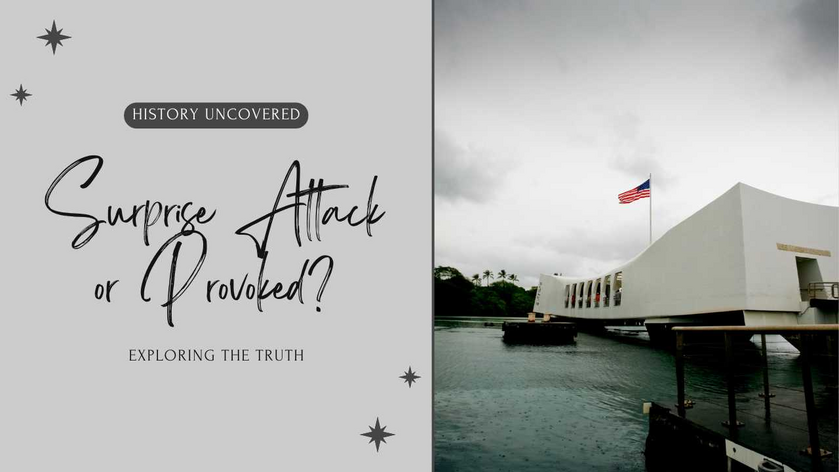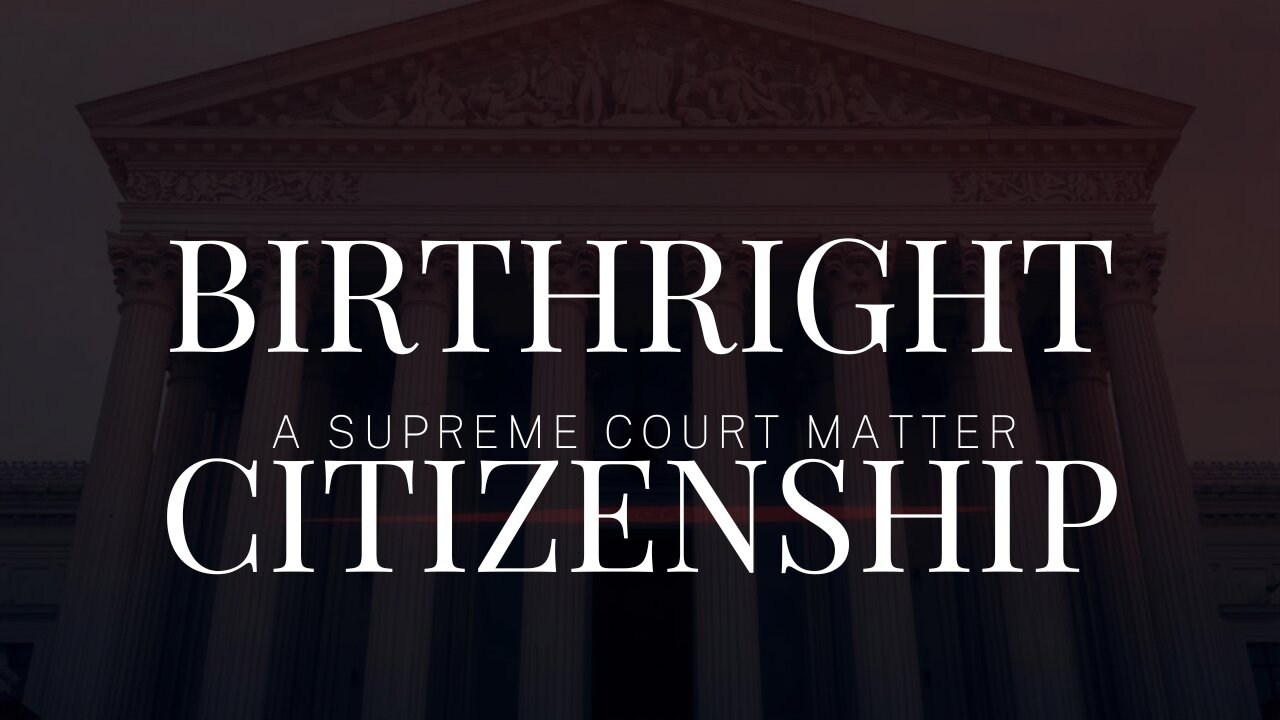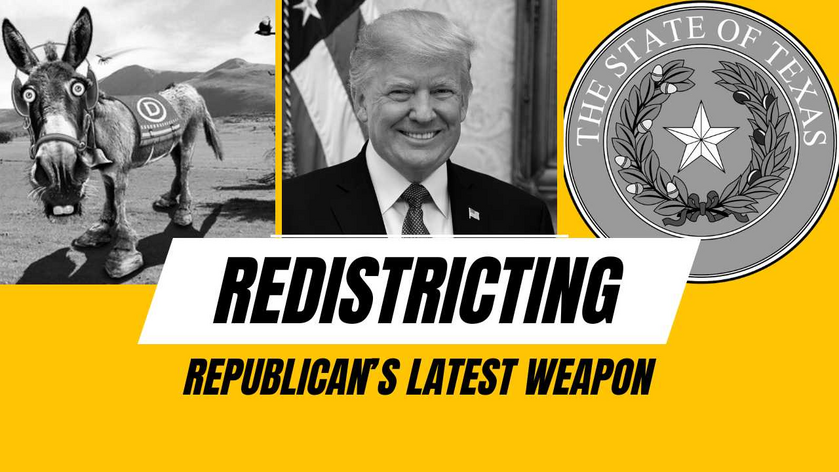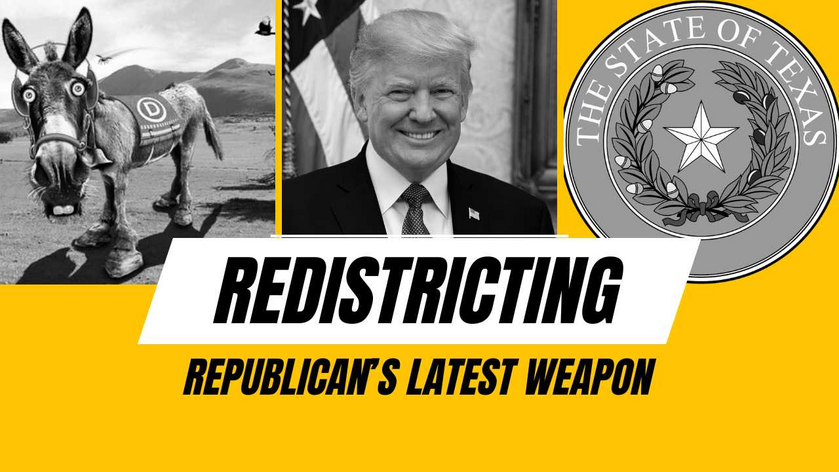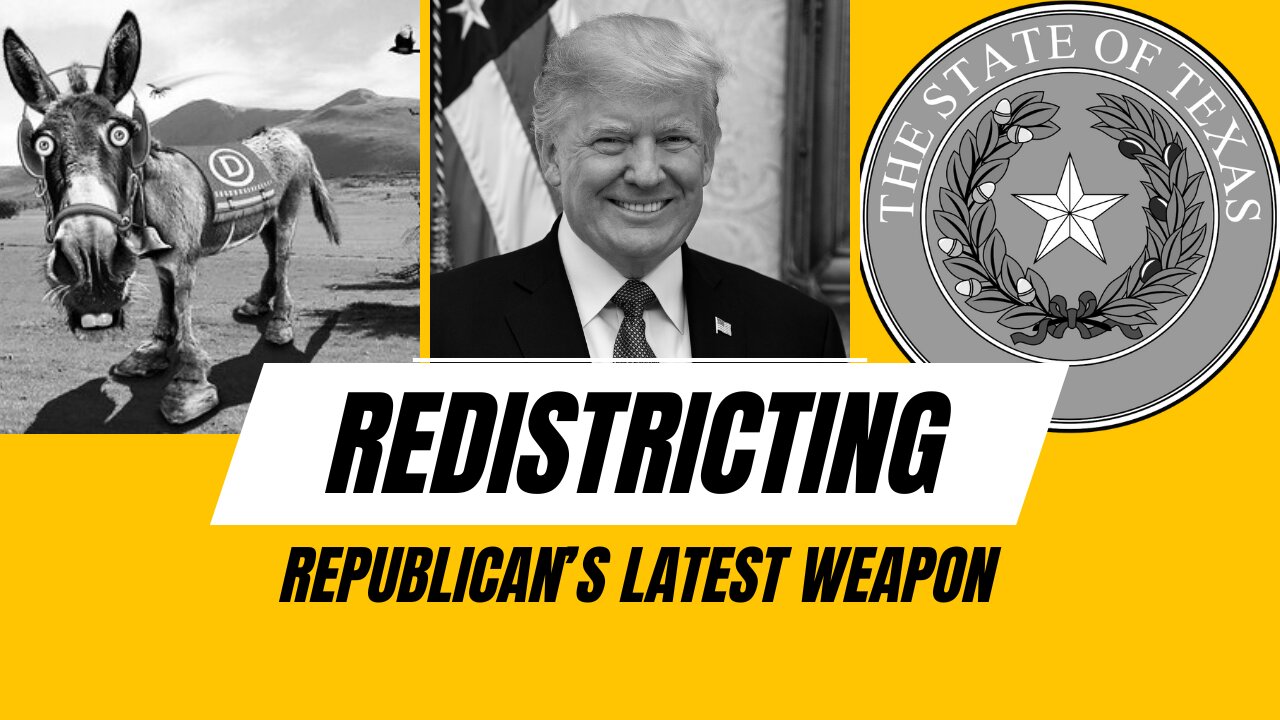Yesterday (December 7) is, of course, the 83rd anniversary of the Japanese attack on Pearl Harbor in Hawaii. That attack caused the actual entry of the United States into the Second World War. American victory in that war isn’t the point. The point is that the Deep State existed even then – and today an editorial officer at The Gateway Pundit, who signs himself only as “Assistant Editor,” published a body of documentary evidence suggesting that President Franklin D. Roosevelt knew of the attack in advance, and let it happen. Not only that, but these documents contain suggested ways to make it happen, and prevent any possible warning. If this is true, then it is treason. Furthermore it provides a useful context for evaluating the current actions of the Biden administration in several theaters of war.
The conventional Pearl Harbor narrative
Conventional history tells us that the Japanese laid on a surprise attack on Pearl Harbor. Supposedly they launched this attack on the same day they sent a fourteen-part ultimatum to the Franklin D. Roosevelt administration. Somehow that ultimatum never reached any U.S. official until the attack had already occurred – fifty-five minutes earlier.
Secretary of State Cordell Hull received notice of the raid forty minutes after it happened. His staff also said the Japanese Ambassador, and the Japanese Special Envoy, were waiting to see him. Hull telephoned President Roosevelt, who said yes, the Japanese attacked us, but don’t let those two know that you know. Just received them, take whatever message they have to deliver, then show them out.
So Hull invited the two men in, and they handed him the fourteen-part ultimatum. This document made him angry clear through. He fixed both men with a cold, hard death stare, and said,
I must say that in all my conversations with you during the last nine months I never uttered one word of untruth. This is borne out absolutely by the record. In all my fifty years of public service I have never seen a document that was more crowded with infamous falsehoods and distortions – on a scale so huge that I never imagined until today that any government on this planet was capable of uttering them.
Vice-Admiral Isoroku Yamamoto IJN was tasked with the actual attack. He had wrecked the harbor installation, sunk at least four battleships (including USS Arizona), and heavily damaged the rest. But the aircraft carriers were not in harbor at the time. Having spent much of his fuel to close within striking range, Yamamoto withdrew. Later, when Japanese official radio trumpeted his triumph, Yamamoto remembered American radio intercepts saying his timing had been way off. So he didn’t feel as triumphant as his superiors must have felt. To his own staff he is reported to have said:
I had intended to deliver a fatal blow to the American fleet by attacking Pearl Harbor immediately after Japan’s official declaration of war. But according to the American radio, Pearl Harbor was attacked fifty-five minutes before our ultimatum was delivered in Washington. I can’t imagine anything that would infuriate the Americans more. I fear all we have done is to awaken a sleeping giant and fill him with a terrible resolve.
But what if that were not half the story?
Turn now to the Gateway Pundit “Assistant Editor’s” piece. He begins with a document called the McCollum Memo, by Lt. Cmdr. Arthur H. McCollum USN. This officer carried the title of “Chief of Naval Operations,” which means something a lot different from what it means today. The job called CNO today was called CINCUS – Commander in Chief, U.S. – in those days. Adm. James O. Richardson USN held that job then.
So this officer, Commander McCollum, on October 7, 1940, wrote a memo on the subject “Estimate of the Situation in the Pacific and Recommendation for Action by the United States.” He observed – probably correctly – that the Japanese had spread themselves thin and could not take on another thing. But he also said the Japanese could wreak havoc against British interests in Australia, India, and the Dutch East Indies. This was important because Germany, Italy, and Japan had already made a treaty of alliance against the United States. And why had they done this? Because the United States was giving or lending (the “lend-lease” program) military aid to Britain and other Allied powers.
McCollum’s miscalculations
McCollum made two conclusions at the heart of the Gateway Pundit thesis. First was that the United States could have Japan’s lunch any time it chose “prompt, aggressive naval action.” In light of later history, that seems to have been a gross miscalculation. Surely the survivors of the Bataan Death March would have loved to argue with Commander McCollum on this point. To say nothing of the surviving families of the crew of USS Arizona and three other battleships.
The second was that the American people wouldn’t stand for a unilateral, clearly aggressive declaration of war. So if America would not start a fight, McCollum recommended that America pick a fight. And here was how:
9. It is not believed that in the present state of political opinion the United States government is capable of declaring war against Japan without more ado; and it is barely possible that vigorous action on our part might lead the Japanese to modify their attitude. Therefore, the following course of action is suggested:
A. Make an arrangement with Britain for the use of British bases in the Pacific, particularly Singapore.
B. Make an arrangement with Holland for the use of base facilities and acquisition of supplies in the Dutch East Indies.
C. Give all possible aid to the Chinese government of Chiang-Kai-Shek.
D. Send a division of long range heavy cruisers to the Orient, Philippines, or Singapore.
E. Send two divisions of submarines to the Orient.
F. Keep the main strength of the U.S. fleet now in the Pacific in the vicinity of the Hawaiian Islands.
G. Insist that the Dutch refuse to grant Japanese demands for undue economic concessions, particularly oil.
H. Completely embargo all U.S. trade with Japan, in collaboration with a similar embargo imposed by the British Empire.
10. If by these means Japan could be led to commit an overt act of war, so much the better. At all events we must be fully prepared to accept the threat of war.
President Roosevelt seems to have taken McCollum’s advice. This has been public knowledge since at least November 21, 1945 – the dateline of a relevant Hearst Newspapers report. According to it, Adm. Richardson testified to the Pearl Harbor commission that Roosevelt was actively provoking war. For example, Roosevelt ordered the reopening of the Burma Road. When the Japanese inevitably objected, Roosevelt would blockade them from outside trade.
Someone – maybe President Roosevelt – relieved Richardson of his command next February for protesting the siting of the fleet at Pearl Harbor. R-Adm. Husband E. Kimmel famously succeeded to that very command, and also to the post of CINCPACFLT.
And that was only the beginning.
Other documents challenging the Pearl Harbor narrative
The TGP Assistant Editor lays out other documents that show that the government, and the military, knew that the then Territory of Hawaii was crawling with Japanese spies – and also knew of plans for an attack. These documents include:
Letter to Sen. Homer S. Ferguson (R-Mich.) by Harold N. Cole, M.D., about a friend, Albert I. Ludlow, M.D. This Doctor Ludlow, returning from Korea to Hawaii, knew of Japanese espionage activity on the islands. Doctor Ludlow warned the military, who did not heed his warnings. (Sen. Ferguson eventually was “kicked upstairs,” first to an Ambassadorship and then a judgeship on the Court of Military Appeals.)
Telegram from Amb. Joseph Grew, detailing what he’d learned of a Japanese plan to attack Pearl Harbor. The date: January 27, 1941.
Memo from Cmdr. McCollum to CINCPACFLT (R-Adm. Kimmel, now a temporary Admiral), apprizing him of Amb. Grew’s intelligence.
Diplomatic telegram, dated May 24, 1941, describing the Japanese Consul telling the Brazilian Consul General that he expected his country to be at war with the United States “soon.” This telegram bears official State Department rubber stamps dated May 29 and June 4. (In June, then-Lt.-Gen. Walter Campbell Short took command of Hawaii’s ground defenses.)
Article in the New Castle News describing the seizure of 19 Japanese fishing vessels caught spying near Hawaii.
Articles showing the Lloyds of London sold “bombing insurance” in Hawaii from August 17 through August 24.
Countdown to war
In August, according to the TGP piece, the Japanese government was begging for a chance to talk matters over. Roosevelt delayed, then informed them that he would exact “humiliating” concessions. The government collapsed, and a militaristic government took over.
In October, officials canceled all commercial traffic in the Pacific. But a Navy flight surgeon, aboard an airliner “blown off its course by a Pacific storm,” spotted a Japanese task force headed for Hawaii. Source: The Chicago Tribune.
Other documents follow:
Letter from Karl Henry von Wiegand to Sen. Ferguson (see above), saying he warned the commander of the Asiatic Fleet, V-Adm. William A. Glassford USN, of an impending Japanese attack on or before December 6, 1941. The admiral relocated himself, Mr. Wiegand, and his then traveling companion to the Philippines.
Telegram from the Dominican Republic (then under the Trujillo Regime) quoting Japanese diplomats as saying war was inevitable. Dateline: November 3, 1941.
Letter from military engineer James E. Cassidy to a Senator (Sen. Ferguson?), reporting on orders to him to build anti-aircraft defenses on the north of Oahu – orders that higher-ups countermanded.
Telegram from Amb. Grew to SecState Hull, dated November 17, 1941, also warning of a sneak attack.
Telegram from Adm. Thomas C. Hart USN, commander, Asiatic Fleet, to Adm. Harold R. Stark, on November 24, 1941, warning of a possible outbreak of war.
Editorial by Walter Lippmann of the Winston-Salem Journal, dated November 30, 1941, explaining that the United States wouldn’t start a war, but Japan might.
In the last week
The headlines continued:
Headline in The Honolulu Star-Advertiser, dateline November 30, 1941, warning of a possible attack.
Documentary proof that the military was declaring martial law orders at about this time.
Documents showing why the aircraft carriers were not in harbor – but obsolete battlewagons were.
Document showing that the Pacific Fleet (minus the carriers) was in harbor on December 6, with Adm. Kimmel intending to have them pass in review. The admiral gave the crews leave on December 7, and so many officers and enlisted were “hung over” next morning. (The Otto Preminger film In Harm’s Way, based on Harm’s Way by Capt. James Basset USN, begins with an officers’ dance on Ford Island on December 6. That might or might not have actually taken place, but it would be consistent with Adm. Kimmel’s orders.)
Article in the Wilkes-Barre Times-Leader, dated August 3, 1942, showing that Japanese had been firing on American ships for days before Pearl Harbor.
Message traffic indicating State Department knowledge, on December 2, that Japanese were fleeing the Panama Canal Zone for Chile.
Story in The New York Times from 1983. It shows that a Naval Intelligence officer was relaying movements of the Japanese Fleet for four days before the attack.
Handwritten note describing doctors and nurses stockpiling supplies – then noticing no reconnaissance planes in the air on December 6.
Story at UPI about a Dutch admiral who saw the approaching Japanese fleet. Years later, officials brand him a liar – but his diaries have survived.
The Pearl Harbor attack
At 0700W on December 7, 1941, two operators of the Opana Point radar receive orders to turn it off. Instead they keep it on, if only to maintain proficiency. Then at 0702 they spot the Japanese planes. They report this to a Lt. Kermit Tyler who literally says, “Yeah? Don’t worry about it.” That scene made it into the motion picture Tora! Tora! Tora! Which is as close to a definitive Pearl Harbor movie as anyone made.
When the attack occurred, Washington knew then that relations with the Japanese had broken down, according to TGP. Hawaii didn’t get the message until after the raid was over. The timing here is confusing, and the documentation is incomplete. But it’s a fact that the Soviet Ambassador caught the last plane out of Honolulu before the attack came.
The confusing timeline of State Department knowledge of the breakdown in Japan-American relations appears to contradict the story of Cordell Hull’s seething “no government on this planet” speech. But suppose Hull really was out of the loop about President Roosevelt provoking war? Then everything Roosevelt is reported to have told Hull, makes sense. He set Hull up to get a message that would make him angry enough to want to strangle someone. Roosevelt might or might not have known about the fourteen-part message as it was coming in. If he didn’t know, he could readily guess the import of the message the Japanese Ambassador and Special Envoy bore.
Admiral Yamamoto’s observation
Many historians insist that Adm. Yamamoto’s “sleeping giant” remarks are an ahistorical interpolation. They pour similar contempt on his warning that if the Imperial Japanese Army tried to invade the United States,
You will find a gun behind every blade of grass.
But Yamamoto most likely would be as “out of the loop” as were Gen. Short and Adm. Kimmel. Stll, where did he get his intelligence about the fourteen-part ultimatum not reaching Washington until after the attack? No one knows – or will admit it if he does.
Of far greater importance, however, is what these documents prove about the kind of government the United States has.
A more subtle kind of false flag
Anything that looks like a “surprise attack” on American soil, one must now conclude is one of three things:
An actual surprise attack,
A false-flag pseudo-operation, meaning that the government staged the attack and everything about it, or:
An intermediate deception.
In this case, Franklin D. Roosevelt, according to this evidence, knew of the attack in advance, and indeed provoked it. His motive was the same as that of Alexander Hamilton in 1798, or President Lyndon B. Johnson in 1968. Which is: he wanted to go to war, to become a conqueror. Julius Caesar would have understood, as would his successor Augustus. That aside, the development of banking likely created the Deep State that has sought world conquest in order to build a world administration – with themselves running it.
Now examine President Biden’s provocative “clearance” to the Ukrainians to fire American intermediate-range missiles into Russia. That looks like an even worse provocation than Roosevelt employed. And it is just as treasonous, or more. A Poseidon missile could “take out” Washington, or New York, without warning. But the Deep State don’t care, so long as they have a Deep Underground Military Bunker complex for a headquarters.
Roosevelt got away with it because he was President-for-life in all but name, and the Japanese had a militaristic streak. Biden might not. Vladimir Putin is smarter than Emperor Hirohito or his advisers. He sees Donald Trump waiting in the wings, and will weather the storm until Trump becomes President again.
Pearl Harbor has a new meaning
The body of evidence might not be as damning as it seems, but it is too damning to ignore. President-elect Trump should open inquiries into Pearl Harbor – and Nine-eleven, too. Lay aside the question of punishments for treason, which both incidents might involve. If he really wants people to remember him as the Peace President, then he has every incentive for such inquiries.
An inquiry into the October 7 incident that began the Fourth Arab-Israeli War would also be productive, for different reasons. Some of those hostages taken that day are American citizens, and that gives Trump grounds to investigate. More broadly, the International Criminal Court has issued warrants for the arrest of Prime Minister Benjamin Netanyahu and his chief of staff. If Trump intends to extend them consular or other protection, he must investigate, if only to show Israel’s critics how wrong they are.
But the real purpose of inquiries like these, is to restore the idea that war is serious business, a last resort. And if someone did gallop the United States into the greatest (so far) war in history, something needs to happen to make sure that sort of treason never happens again.
Finally: this episode appears to support Ron Paul’s position that a free society has no enemies, save what it makes. On the last Independence Day, CNAV suggested declaring independence from the Deep State. A full inquiry into the causes of the Pearl Harbor attack would be a step in that direction.
Link to:
The article:
https://cnav.news/2024/12/08/foundation/constitution/pearl-harbor-allowed-happen/
Video:

Cordell Hull’s remarks:
https://tamdiepblog.wordpress.com/2018/04/15/infamous-falsehoods-and-distortions-cordell-hull/
Assistant Editor’s piece:
https://www.thegatewaypundit.com/2024/12/report-evidence-suggests-fdr-let-pearl-harbor-happen/
The McCollum Memo from WikiSource:
https://en.wikisource.org/wiki/McCollum_memorandum
Doctor Cole’s letter:
https://politicamag.substack.com/p/pearl-washington-warned-of-japans
The Lloyds articles:
https://politicamag.substack.com/p/pearl-harbor-lloyds-cancelled-insurance
The Wiegand Letter:
https://politicamag.substack.com/p/pearl-harbor-reporter-tells-us-japs
The Hart-Stark Telegram(s):
https://politicamag.substack.com/p/pearl-harbor-a-week-prior-to-the
Walter Lippmann editorial:
https://www.newspapers.com/image/933747977/
Star-Advertiser headline:
https://www.newspapers.com/image/259734425/
Martial law:
https://politicamag.substack.com/p/pearl-harbor-weak-leads-pearl-military
Carrier and battleship dispositions:
https://politicamag.substack.com/p/pearl-harbor-fr-aloysius-schmitt
Wilkes-Barre Times-Leader piece:
https://www.newspapers.com/image/425724636/
Messages about Japanese fleeing the Canal Zone:
https://politicamag.substack.com/p/pearl-harbor-japs-trying-to-escape
New York Times piece about Naval intelligence tracking the Japanese fleet:
https://www.nytimes.com/1983/12/04/us/sailor-in-pearl-harbor-waraning-is-identified.html
UPI story about the Dutch admiral:
Soviet Ambassador leaves before attack:
https://politicamag.substack.com/p/pearl-harbor-senior-soviet-ambassador
Fourth Arab-Israeli War:
https://cnav.news/2023/10/07/editorial/talk/israel-war-2/
Independence Day from globalists:
https://cnav.news/2024/07/04/accountability/executive/independence-day-new-war/
Declarations of Truth:
Declarations of Truth Locals Community:
https://declarationsoftruth.locals.com/
Conservative News and Views:
Clixnet Media
